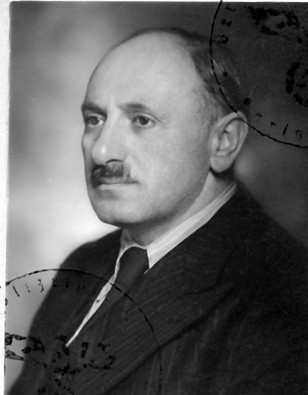Gigantic mural captures the legendary Hungarian football coach on the wall of Chelsea Stadium

Roman Abramovich, the Russian-Jewish owner of Chelsea, celebrates the 75th anniversary of the liberation of the Auschwitz Death Camp in a spectacular and enduring fashion: the billionaire commissioned an enormous painting on the western facade of Stamford Bridge by an Israeli-born street artist in London. Solomon Souza’s 7 by 12-metre painting shows three football players whose fate is intertwined with the German death camp in Poland, reports 444.
(The process of painting the artwork planned to be inaugurated on January 15th can be viewed live here.)
Julius Hirsch was the first Jewish member of the German national football team. After his retirement in 1923, he coached children, then in 1943, he was taken to Auschwitz and then killed on arrival.

You probably heard about Ferenc Puskás before, but recently, he received a posthumous award, which you can read more about here. One of Hungary’s largest stadiums is named after him as well. If you want to see it and know how monumental it is exactly, then read this article.
Ron Jones, who died at the age of 102 in 2019, was not a professional football player. As a member of the British Army, he was captured in Germany in 1940 and was transported to Auschwitz as a prisoner of war after months of detours in Italy. He worked there six days a week in a munitions factory, but on Sundays, he played football as a goalkeeper of the prisoners’ team, sometimes against the Nazi guards. Anticipating the approach of the Allied forces, the Nazis forced Jones and the other inmates to march from Poland to Austria. During the 17-week forced march, more than 100 prisoners of war died, and the survivors eventually got released by the Americans.

Source: dailymail.co.uk/news/article-2081286
Árpád Weisz is one of the lesser-known world stars of Hungarian football, who was a great player to begin with, but he became even more successful as a coach.
He was born in Solt, and he became a six-time national midfielder and fullback as a player of the team ‘Törekvés’ (pursuit, ambition), but soon, he joined the legionnaires. As a player in the Czechoslovakian Jewish team ‘Maccabi Brno’, he defeated Real Madrid and then transferred to the national team of Italy, where he became a champion with ‘Inter’.
He was an assistant coach for a year, then he became a coach. A few years after his career as a player, the team he coached became champions. In addition, it was the first “regular” championship with the league system in Italy, so Weisz was the first Serie A champion among the coaches.
But he got even more successful with the best Bologna of all time, leading the team to 3 league titles.
In 1938, he led an Italian football victory against the Hungarian team. Not only was Weisz a successful pragmatic coach but also a renowned theorist. He wrote several books that tactically renewed the football of his era. Due to his Jewish origin, Weisz had to leave Italy to reach the Dutch Dordrecht with a slight French detour. He started well here, as the team he coached ranked first when Weisz was interned in 1942. He was killed in Auschwitz together with his wife and two children in January 1944.

Source: 444.hu





